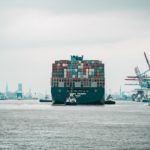 In 2021 there have been visible concerns about the supply chain issues that have resulted in long queues of container ships outside major ports. It has prompted worries that supply chains are too complex and too prone to disruption. Research from the University of Oxford suggests the opposite is actually the case, and that longer supply chains and deeper networks are actually what makes economies prosperous.
In 2021 there have been visible concerns about the supply chain issues that have resulted in long queues of container ships outside major ports. It has prompted worries that supply chains are too complex and too prone to disruption. Research from the University of Oxford suggests the opposite is actually the case, and that longer supply chains and deeper networks are actually what makes economies prosperous.
“The more steps in the process, the more opportunity there is for innovation,” the researchers explain. “Industries with greater supply chains do better. We have been able to predict this over long periods. It does not explain everything that happens, but the principle can be seen operating.”
The benefits of sophisticated supply chains also extends to nation-states, with the researchers suggesting that around half of the economic growth seen in China in recent years is a direct result of their deeper supply chains.
“We show that production chains accumulate the benefits of technology improvement so that long production chains facilitate faster price reduction in industries and faster GDP growth in economies,” they explain. “These are latent predictions in standard models that we develop theoretically and show that they bear out in the data.”
Economic advantage
The authors argue that economies will usually achieve greater economic growth, especially during its manufacturing stage, before relaxing to a slower growth period as it becomes a more developed economy.
“Our results show that the structure of a production network, taken as given, can serve as a proximate cause of growth differences across countries,” the researchers explain. “Production chains accumulate the benefits of technology improvement so that long production chains facilitate faster price reduction in industries and faster GDP growth in economies.”
They also believe, however, that as free trade extends around the world, the growth rate of individual nations is likely to converge as they begin to utilize most of the same supply chains as one another.